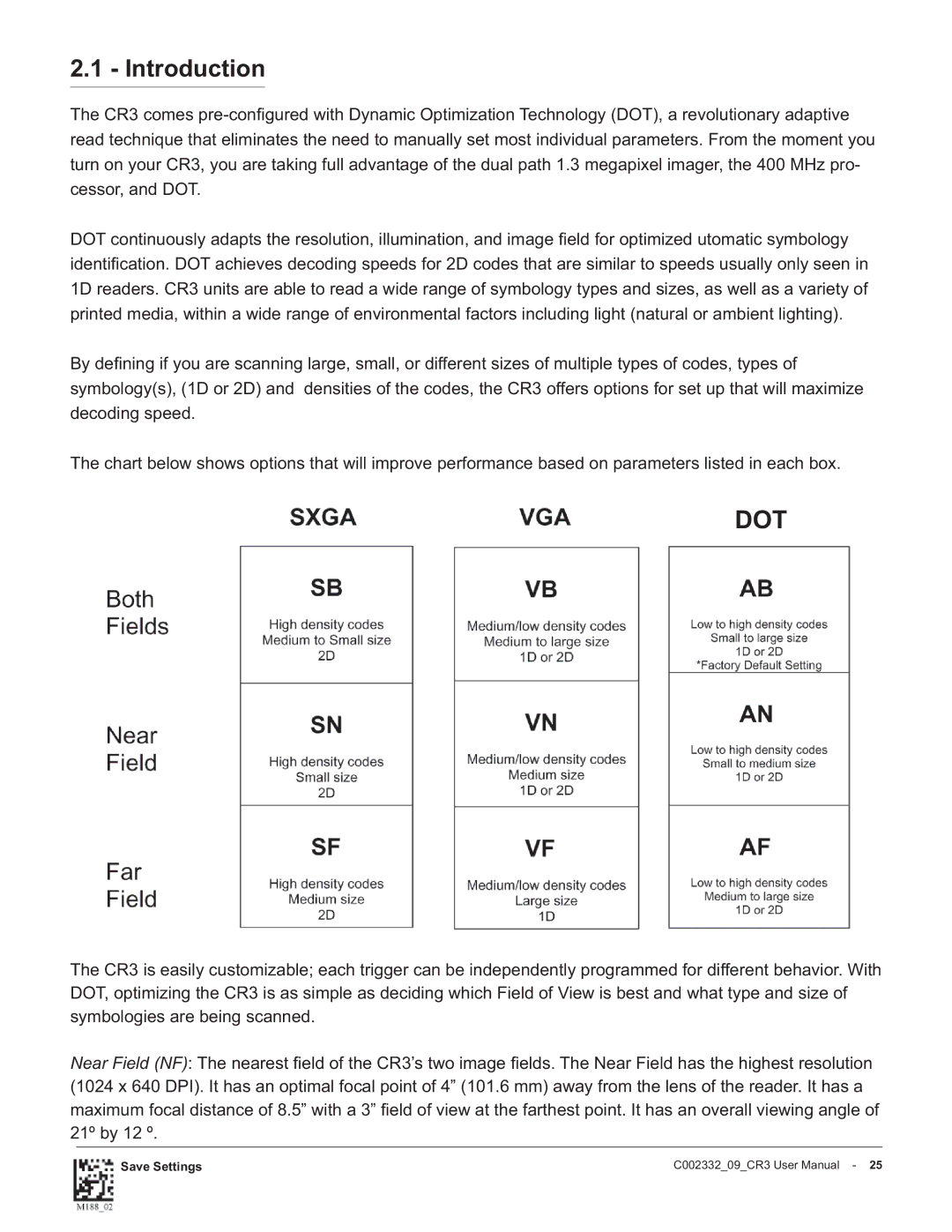
2.1 - Introduction
The CR3 comes
DOT continuously adapts the resolution, illumination, and image fi eld for optimized utomatic symbology identifi cation. DOT achieves decoding speeds for 2D codes that are similar to speeds usually only seen in 1D readers. CR3 units are able to read a wide range of symbology types and sizes, as well as a variety of printed media, within a wide range of environmental factors including light (natural or ambient lighting).
By defi ning if you are scanning large, small, or different sizes of multiple types of codes, types of symbology(s), (1D or 2D) and densities of the codes, the CR3 offers options for set up that will maximize decoding speed.
The chart below shows options that will improve performance based on parameters listed in each box.
DOT
The CR3 is easily customizable; each trigger can be independently programmed for different behavior. With DOT, optimizing the CR3 is as simple as deciding which Field of View is best and what type and size of symbologies are being scanned.
Near Field (NF): The nearest fi eld of the CR3’s two image fi elds. The Near Field has the highest resolution (1024 x 640 DPI). It has an optimal focal point of 4” (101.6 mm) away from the lens of the reader. It has a maximum focal distance of 8.5” with a 3” fi eld of view at the farthest point. It has an overall viewing angle of 21º by 12 º.
Save Settings | C002332_09_CR3 User Manual - 25 |
